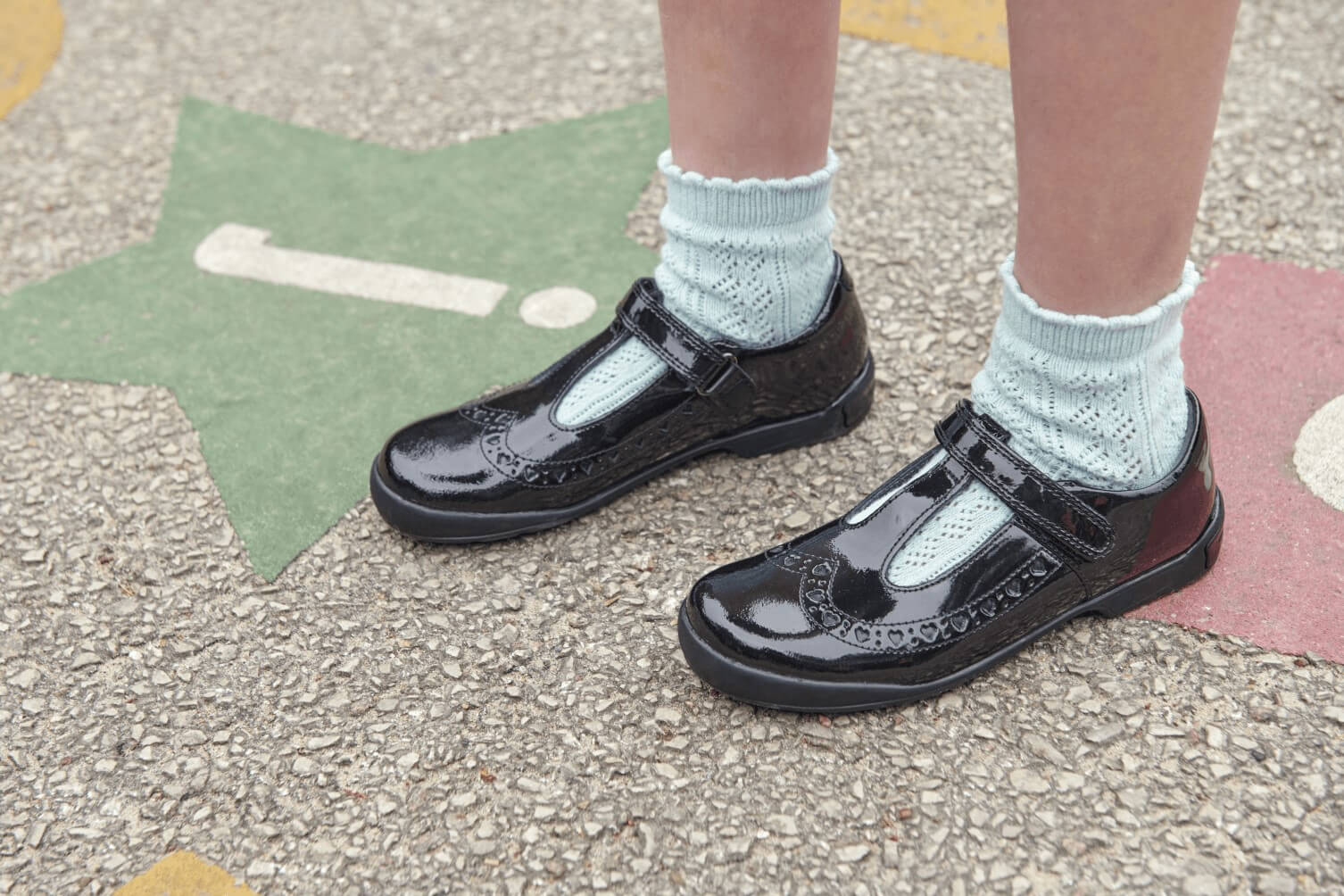
Finding the right shoe size for children is essential to ensure comfort and to allow their feet to develop and grow naturally. So when you are getting their feet measured and trying on new shoes, it’s important to get it right.
One of the main questions parents ask when shopping for children's shoes is - do socks affect shoe size? And should socks be worn when trying on and wearing shoes?
Read on to find out everything you need to know for a perfect fit.
First of all, socks do affect shoe size. They make feet ever so slightly larger than they would be bare. This extra padding needs to be taken into account when measuring up for new shoes, and when trying them on too.
Ideally when trying on new shoes, your child will be wearing the socks they’d normally wear with that style of shoe. For example, light cotton socks with trainers, or thicker, woolly socks if you’re shopping for wellies or sturdy boots for winter. And of course, when trying on school shoes, make sure to have a pair of the socks they normally wear for school to hand. Then you can just pop those on when it comes to fitting.
If you’re not sure what socks your child will wear with their new shoes, take your best guess. As long as you make at least some allowance for socks when fitting or sizing shoes, you should be able to get a good fit.
It might sound obvious, but you should also make sure that the socks are the right size and fit well.
And once you’ve bought your child’s new shoes, it’s important that they wear the right socks with them. Otherwise, you could find that the shoes are too tight or too loose. This could lead to rubbing, pinching or blisters, all of which can be uncomfortable and painful for your little one.
For some types of children’s shoes, socks don’t make a huge difference to the size. It is still important to take them into account when choosing the right size, but it’s not the end of the world if you’re out by a fraction of a millimetre.
But for other shoes, socks really do matter. A prime example is when buying children’s boots, which should always be worn with socks. You need to factor in the extra thickness of the kinds of woolly or bulky socks that your child will usually wear with a pair of boots. In some cases, thick socks can add as much as half a size - or perhaps even more.
To get an accurate fit, it’s usually best to measure your child’s feet while wearing their favourite pair of socks for boots.
You can apply the same logic when buying other kinds of footwear.
For example, imagine you’re going away for some winter sun and shopping for children’s summer sandals off-season. Before trying any pairs on, it’s best to remove your child’s thick winter socks before trying on any sandals. Otherwise, you could end up with sandals that are far too big.
If you’re ever in doubt when shopping for children’s shoes, ask for advice on fitting and sizing from an expert in-store or ask one of our friendly customer service team.
They can also help you figure out how long it’ll be until your child will need the next size up, as their feet grow. This can potentially save you from buying shoes they grow out of in a matter of months, as well as ensuring a comfortable fit for right now.
Author: Click Consult, published 06-09-2023.